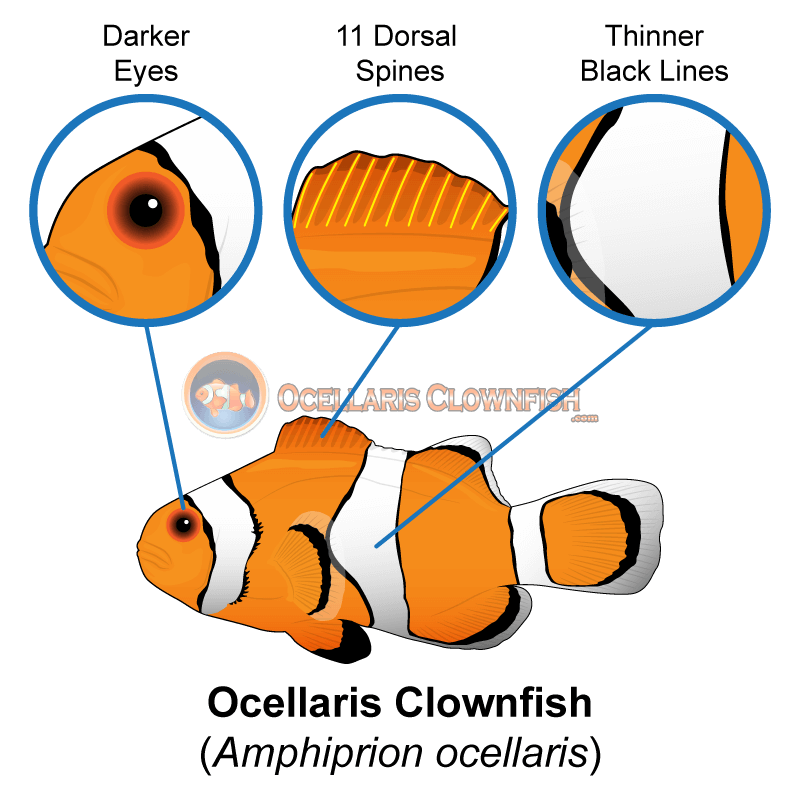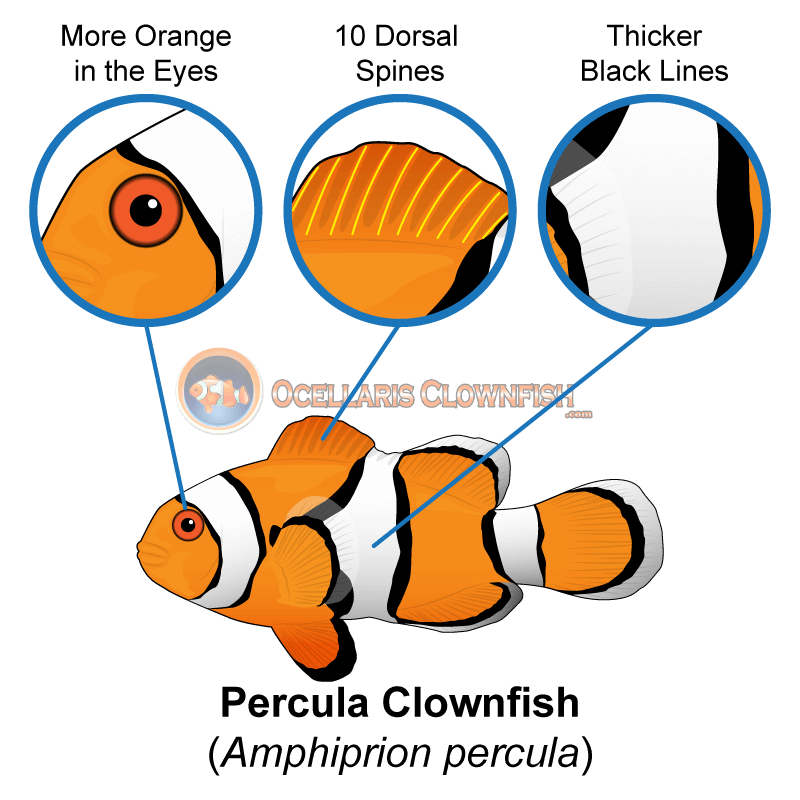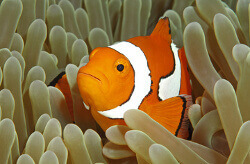Difference Between Ocellaris and Percula Clownfish
One of the most common questions from new clownfish owners (and even experienced reef keepers) is, "What is the difference between an Ocellaris Clownfish and a Percula Clownfish?" After all, one of the Ocellaris' most common names is False Percula Clownfish. The differences are minute. However, the two fish are distinct species, although closely related.
It's surprisingly common that people will believe that a True Percula Clownfish is a wild caught fish and a False Percula Clownfish is a tank raised fish. While this may make sense given the names, it is not at all true. Both Ocellaris and Percula clownfish may be found in the ocean or tank raised.
How Ocellaris and Percula Clownfish are Different
There are a number of differences between the two species. Let's take a look at a few:


- Dorsal fin spines: The True Percula Clown (Amphiprion percula) typically has 10 dorsal spines. These are the spines in the fin on the very top of the fish. The False Percula (Amphiprion ocellaris) has 11 dorsal fin spines. On rare occasions the A. percula will have 9 dorsal spines and the A. ocellaris will have 10. However, in general, the True Percula will have 10 and the False Percula 11. Also, the back part of the dorsal fin is generally taller on the False Percula (Ocellaris) than it is on the True Percula.
- Black outlines: False Perculas often have much less black outlining their white strips. Sometimes it may look as though there is no black at all, but there is almost always at least a thin black outline adjacent to the white stripes. The True Percula, on the other hand, usually has thicker black stripes outlining the white stripes on their body. This is generally true of standard clownfish, although colorations and patterns can vary greatly from one fish to another. Therefore, this is not a true test one way or the other. It is a good piece of evidence though, when taking into account the other differences.
- Eye color: Another way to tell the difference between the two species is often the color of the eye. On the True Percula, the eye shows more orange color to it surrounding the pupil. Conversely, the Ocellaris clownfish has more black surrounding the pupil.
The video below shows two young clownfish in a holding tank. The black one is a True Percula Onyx clownfish and the other is a Snowflake Ocellaris. Although you can't count the dorsal fins, there are still a number of differences that you can see in the two fish. Note the eye color and how tall the A. ocellaris' fins seem to be. You will also notice how similar the two fish are overall (except the coloration of course).
How False and True Percula Clownfish are Similar
Even with these differences there are many ways in which A. ocellaris and A. percula are very similar. At first glance, they obviously look quite similar. Most people who are not used to looking for the differences could not tell which fish is which species.
Additionally, they often exhibit much of the same behavior. For instance, both Ocellaris and Percula will host the same types of anemones. They swim in the same comical fashion, eat the same foods and have the same requirements for their care. Both are generally passive, friendly fish but can be quite aggressive when battling for dominance or protecting a nest.
Can an Ocellaris and a Percula Clownfish Mate?
Yes they can! Although they are two separate species, A. ocellaris and A. percula can and do regularly mate. The resulting fish is obviously a cross between the two. Most often, the fish are purposely cross bred by clownfish breeders to produce more desirable fish. This is done generally for pattern and coloration, such as in producing designer clownfish.
For instance, a breeder may desire a clownfish with bold, white patterns surrounded by black coloration with very little orange. In this case they may breed a Black Onyx Percula with a Snowflake Ocellaris. The resulting fish is often called a Snow Onyx and is a healthy and beautiful cross between the two species.
For more information, check out this guide to breeding clownfish.


